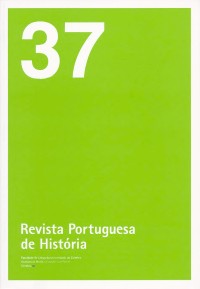Please use this identifier to cite or link to this item:
https://hdl.handle.net/10316.2/44507| Title: | História da cultura material de época islâmica e o exemplo de uma cozinha do Castelo Velho de Alcoutim (Algarve) | Authors: | Catarino, Helena | Issue Date: | 2005 | Publisher: | Instituto de História Económica e Social Imprensa da Universidade de Coimbra |
Abstract: | A longa diacronia que correspondeu à ocupação islâmica da Península Ibérica foi acompanhada de uma vasta e diversificada cultura material, desde os objectos mais luxuosos e raros, como os de joalharia, aos recipientes mais comuns e abundantes, representados nos milhares de fragmentos de cerâmica que os arqueólogos recolhem durante o processo de escavação. Elegeram-se, portanto, estes últimos, por serem eles os fósseis directores por excelência, no momento de se aferirem periodizações e/ou cronologias relativas.
Depois de uma breve alusão aos estudos da cerâmica islâmica e uma exposição, em quatro tópicos, sobre os principais fabricos e decorações das cerâmicas de al-Andalus, a análise centrou-se num monumento particular: o Castelo Velho de Alcoutim. A investigação arqueológica desenvolvida nesta fortificação omíada do Algarve Oriental revelou um conjunto de edifícios, desde uma pequena mesquita aos compartimentos habitacionais, dos quais se mostra o exemplo de uma cozinha dos séculos X/XI.
O estudo da distribuição espacial dos vestígios arqueológicos aí deixados permitiu contextuali- zar um forno, lareiras e restos alimentares (ossos de animais e espinhas de peixe), assim como um grupo de cerâmicas (panelas, pratos, bilhas, alguidares, etc.) e relacioná-los com os hábitos alimentares dos muçulmanos que aí viveram. The long span of time that corresponded to the Islamic occupation of the Iberian Peninsula was accompanied by a vast and diversified material culture, from the most luxurious and rare objects, such as jewellery, to the most common and abundant recipients, represented by the thousands of ceramic fragments which archaeologists recover during the excavation process. These last ones were, therefore, chosen because of being, par excellence, the directing fossils when the moment comes to standardize periodizations and/or relative chronologies. After a short allusion to the studies of Islamic ceramics and an the exposition, in four topics, of the main manufacturings and decorations of the ceramics of al-Andalus, the analysis focused on a specific monument: the Castelo Velho of Alcoutim. The archaeological research done in this omyad fortress in oriental Algarve unveiled a group ofbuildings, from the small mosque to the dwelling compartments, from which the example of a kitchen from the 10th/11th Century is shown. The study of the spatial distribution of archaeological remains left, allowed to contextualize an oven, fireplaces and food leftovers (animal and fish bones), as well as a set of ceramics (pans, dishes, pots, bowls, etc...) and relate them with eating habits of the Muslims that lived there. |
URI: | https://hdl.handle.net/10316.2/44507 | ISSN: | 0870-4147 | DOI: | 10.14195/0870-4147_37_15 | Rights: | open access |
| Appears in Collections: | Revista Portuguesa de História |
Files in This Item:
| File | Description | Size | Format | |
|---|---|---|---|---|
| historia_da_cultura_material_de_epoca_islamica.pdf | 720.02 kB | Adobe PDF |  |
Items in DSpace are protected by copyright, with all rights reserved, unless otherwise indicated.
